In their latest iterations, the KTM 390 Adventure and the Royal Enfield Himalayan are the most important ADVs for the Indian market. Here is what we think after riding them back-to-back.

Before we begin, I invite you to throw your mind back to the time when the Royal Enfield Himalayan was powered by an air-cooled engine and the 390 Adventure was a tourer that could do some off-roading as well. Times have changed since then and certainly in favour of us motorcyclists. Today both these motorcycles are completely new machines and undoubtedly their best versions yet. So, now, more than ever, the question becomes pertinent: which one do you pick?
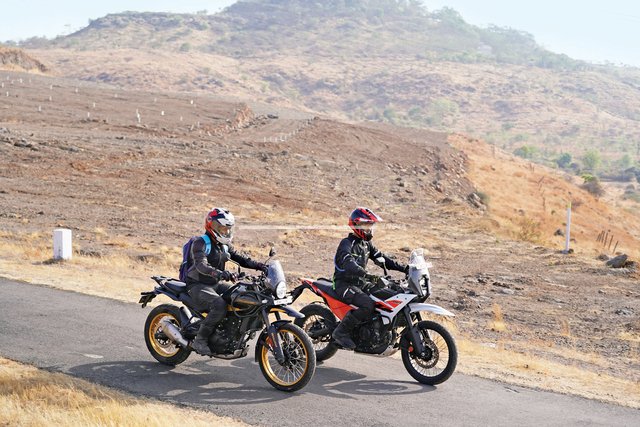
After riding both motorcycles one after the other, we are sure that they do not address the same kind of audience. Both have their strengths and neither has an edge over the other overall because they seek to deliver two different kinds of experience. Both manufacturers may have converged on the same type of motorcycle but the routes they have taken during development and the capabilities of the machines are distinctive and it shows. Thus, this article is more about finding out which motorcycle aligns best with a rider’s priorities and expectations.
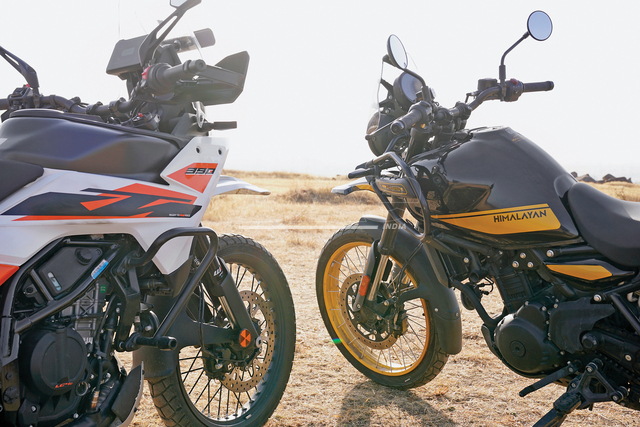
At the simplest level, what connects the Himalayan rider and the 390 Adventure rider is that they want a motorcycle that can handle all roads and no roads. Royal Enfield were clear about that from the beginning, which is why the Himalayan always had spoked wheels, a 21-inch unit at the front and a 17-inch one at the rear. KTM’s choice to move to the same wheel set-up is among the Adventure’s most significant upgrades because the playing field is level now. Visually, these motorcycles are poles apart. Since its introduction, we have always perceived the Himalayan as an explorer, a means to discover places and terrain that not many ventures into. By retaining that retro-modern charm, the new Himalayan stays true to its roots.
Meanwhile, the latest 390 Adventure embraces KTM’s Dakar heritage and off-road prowess, which makes it lean more towards the side of an off-road racer than an on-road tourer. It also features a marked improvement in quality but, juxtaposed with the Royal Enfield, it is clear that the Adventure’s build quality and fit-and-finish leave room for improvement.

When thrown into the crucible of urban life, the Himalayan impressed with its smooth and linear power delivery. The Sherpa 450 engine uses a heavier crank and that enables it to offer a strong low end which allows the Himalayan to pull away at low speeds without much effort, even in higher gears. The connection between power delivery and throttle response feels reassuringly direct, offering fine control over the broad torque curve. What is commendable about the Sherpa is that it also provides a healthy mid-range and a usable top end. This is the first Royal Enfield single that feels so lively while being so close to the red-line. In stock form, the Himalayan uses relatively taller gearing which works positively towards its touring expectations. During our time with the motorcycle, we felt lowering the gearing would suit our urban needs better. We tried it, lost some top speed but gained the crucial advantage of quicker acceleration and the ability to use higher gears at lower speeds. This worked in our favour, especially while riding over technical off-road sections.
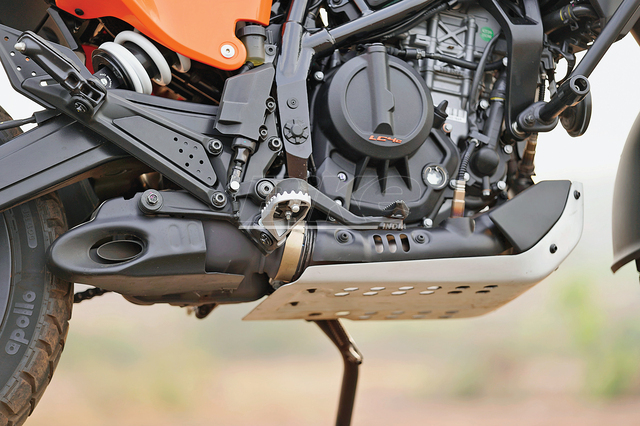
Even in stock form, the Adventure is raring to go. The LC4c is straight from the 390 Duke and not much has been done to optimize it for the Adventure. The contrast between both engines is evident from their exhaust notes too. Compared to the Himalayan, the crank is much lighter in this one, which does let it rev a lot higher but also forces it to idle higher. The engine revs quickly and one finds oneself in the powerband (which begins just before the mid-range) and running out of it fast because it races to the red-line urgently. Its sport bike-like mid-range and top end to make this the more exciting motorcycle to ride fast but it is clear that it is not the happiest at low speeds. Furthermore, it is a busy engine that uses a shorter final drive gearing to compensate for a decent low end; so, in sixth gear and at the same speed, the KTM’s engine tends to work harder than the Himalayan’s.
That is important information because neither motorcycle is a benchmark in refinement but the Himalayan’s ability to carry speed without demanding as much from the engine as the KTM gives it an edge in terms of refinement. Furthermore, between 4,000 and 6,000 rpm, the Himalayan was smoother. That said, both engines are noticeably noisy but their exhaust notes are unique. The Himalayan has an exciting induction roar complemented by an unassuming song from the silencer, whereas the Adventure sounds exactly like the Duke and it has a lovely “braap” signature when ridden flat-out.

The suspension equipment is vastly different. The Himalayan uses an upside-down (USD) fork and a monoshock (only preload adjustable) from Showa while the 390 Adventure uses similar equipment from WP Apex with comprehensive adjustability. While the KTM offers better adjustability and, consequently, more control over the ride quality, its monoshock is mounted directly on to the swing-arm. Overall, its suspension is set up on the firmer side. Meanwhile, the Himalayan’s monoshock uses a linkage and that leverage allows it to offer a more controlled compression. Braking equipment on these two motorcycles is largely similar but the KTM’s arsenal of electronics allows it to offer cornering ABS as well.

On a straight patch of road, the difference in ride quality between them is marginal but their unique abilities get underscored when one reaches the curves. The KTM’s hooligan nature comes to fore instantly. It is eager to tip into the corner and, once turned in, the motorcycle settles into the lean quickly and retains that composure while powering out too. Quick changes in direction take place effortlessly and the bike’s lower weight makes a significant difference. Meanwhile, the Himalayan is among the best handling singles from Royal Enfield yet. While it cannot match the sharp handling of the KTM, it is a capable machine. It takes slightly more input at the handlebar to change direction but the Himalayan’s graceful shift to the edge of its tyres masks its heft well. It also offers a reassuring sense of stability and lesser movement throughout the curve. Both motorcycles use dual-purpose tyres and they get the job done but if we had to choose between them, the KTM’s Apollo Tramplr stood out for us. In terms of precision, feel, feedback, and bite, the braking equipment is similar but given the KTM’s sportier nature, a more lenient ABS setting would have suited the motorcycle better.
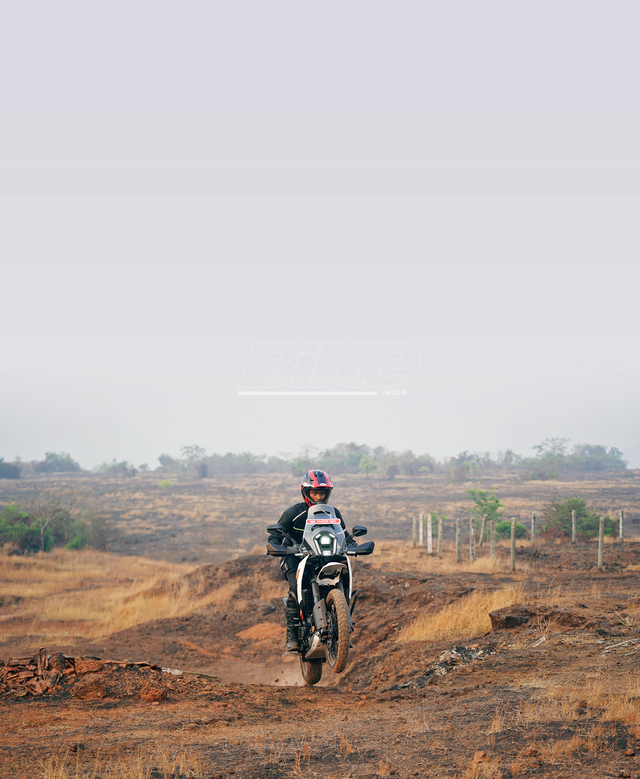
In the dirt, the KTM’s weight allows it to be more manageable but the motorcycle is always moving a bit under the rider when ridden at full throttle. It is a superbly fast but demanding machine to ride off road. While some more front-end feel is welcome, the Adventure’s communication with the rider is crisp and clear enough to be ridden flat-out with confidence. However, it works best in the hands of an active and alert rider because the motorcycle requires constant input to deliver top-tier thrills. Furthermore, it feels lighter than the Himalayan when on the move and that offers the rider more options such as muscling the motorcycle into submission when needed.
The Himalayan gives a sense of stability and less drama in comparison. Its smoother power delivery makes life a lot easier for beginners but one has to learn to manage the weight and develop a good technique because it is not as conducive to being overcome with force as the KTM. To cover ground in the dirt, the Himalayan may be the better choice but for absolute fun, one need not look any further than the 390 Adventure. Experts may prefer the KTM for riding fast in the dirt but to ride over longer distances, the Himalayan makes more sense. Once they get used to the weight, beginners will appreciate the Himalayan’s smooth power delivery. With the KTM, they have the option of different riding modes and multiple throttle response calibrations in “Offroad” mode to subdue the explosive power delivery as needed.
The wheels are worth discussing too. Royal Enfield took the market by storm when they launched the optional cross-laced rims that could run tubeless tyres. It opened a new chapter in convenience and reliability for those who dreaded punctures. KTM went a step further by offering tubeless tyre-ready rims as standard. Furthermore, the design of their wheels is more robust for hardcore off-road use. We have had no reason to complain about either of the rims so far.
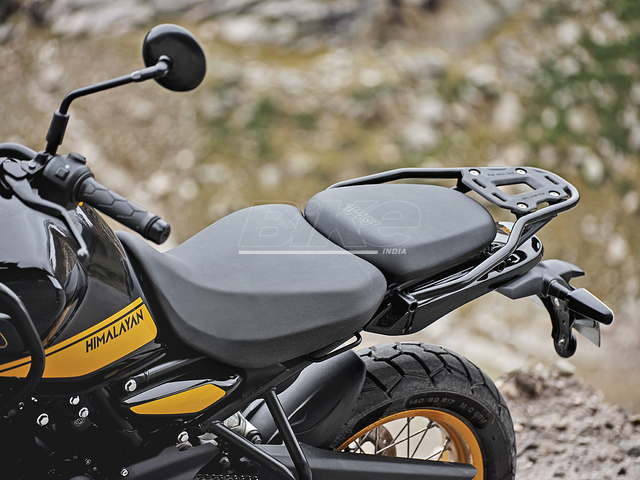
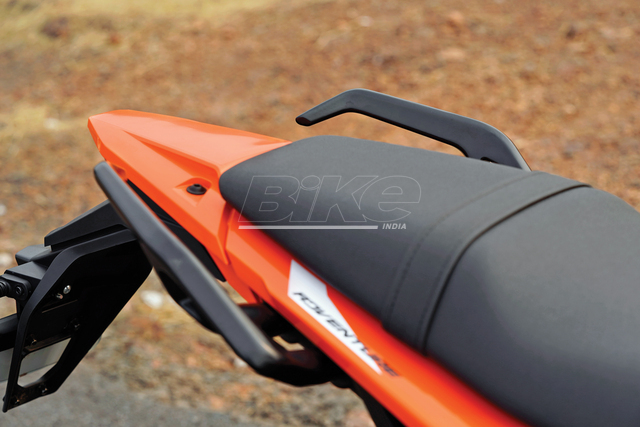
With a plush and roomy saddle, the Himalayan offers the more comfortable perch. In comparison, the KTM’s seat is slightly harder and not as plush for long distances. Standing up and riding is similar on both bikes but the Himalayan’s position is relaxed while the KTM’s is more racy. Both motorcycles have removable rubber for the spiked foot-pegs and we found the KTM’s rubber pieces to be too thick because gear-shifts while wearing ADV boots were tedious.

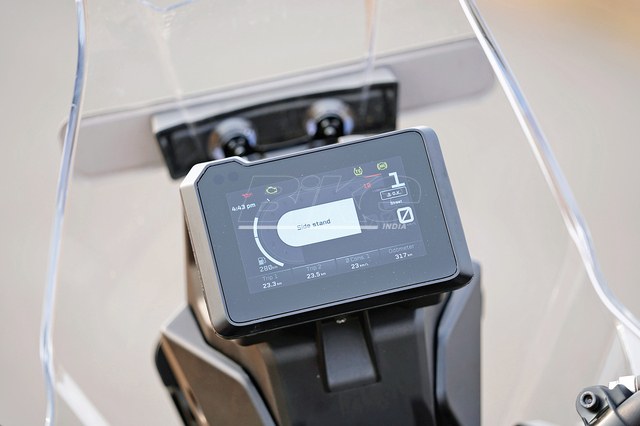
We have to make do with digital instrument clusters in both motorcycles and on the connected technology front, it is the Himalayan that shines because it is easier to use.
With the optional tubeless spoke rims equipped, the Himalayan costs Rs 3.09 lakh. At Rs 3.68 lakh (ex-showroom), the KTM offers more equipment as standard and is good value for money for those who are skilled enough to use the motorcycle to its full potential.

Watch the full video here:
https://www.youtube.com/watch?v=5KbIFV4P2CY

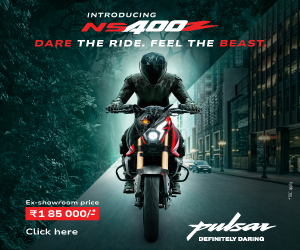
Leave a Reply